THE KETO DIET
Introduction
First off, don’t believe the myth that eating fat makes you fat. Having an adequate intake of good fat in your daily diet is essential to proper nutrition and cellular-level health. The categorizing of good fats/bad fats, however, is somewhat of a controversial subject in the nutrition science realm. Nutrition scientists can agree on a couple of things. 1. Olive oil and other cold-expeller-pressed plant oils, avocados, and nuts/nut oils are in the good category. These are in the category of mono or poly unsaturated fats. 2. Trans-fats (hydrogenated vegetable oil) are considered bad. This would make up baked goods like pie crusts, cookies, processed dough (anything with solid-form vegetable oil), margarine, and many oils which foods are commonly fried in. Trans-fats = fake fats. The type of fat you eat plays a huge factor in your risk for disease, particularly cancer and cardiovascular-related diseases. The fats that people don’t agree on are saturated fats like coconut oil, butter, and some dairy and animal fats. In the Keto Diet, all types of fat are incorporated except trans-fats and it makes up a large portion of your daily diet.
Let’s go through a little more detail about the lipid (fat) macronutrient category called simply “fats”. In the human body, fats store energy, manufacture hormones and bile, provide insulation, and transport fat-soluble vitamins throughout the blood. Fats also fill you up (increase satiety) and increase mouth satisfaction (you feel like you ate something satisfying or rich). Fats are classified as fatty acids/triglycerides, phospholipids, and sterols. Each of these are broken down during metabolism in different ways. Of the three macronutrients (carbohydrates, proteins, and fats), the body chooses to use each to make energy in different ways. Carbohydrates are the preferred or first macronutrient used to make energy. In the absence of carbohydrates, fats are the secondary choice for your body to metabolize into usable energy. The Keto Diet is based on the science behind this – if you limit carbohydrate intake, your body will go into ketosis, which uses both stored fat and ingested fat to make energy to sustain and power you.

What Is The Keto Diet?
The Standard Ketogenic Diet (SKD) is a very low-carb, moderate-protein, and high-fat dietary plan. Roughly the ratios of the macronutrients consumed are 70% fat, 20% protein, and 10% carbohydrates. For a person with a 2000 calorie per day diet, this usually amounts to eating no more than 20-40 grams of carbs per day and 40-80 grams of protein. You will need to carefully look at nutrition labels and your serving sizes to analyze how many grams of each macronutrient you are eating (especially carbs and protein) in order to be on the Keto Diet. Although this will be time-consuming at first to learn the foods you can eat, the serving sizes you can eat, and the amount of carbs and protein which are in each meal, you will eventually get used to this way of living if you continue in ketosis. One tool that can help you track your consumption of carb and protein grams is MyFitnessPal. It is important to not just “eat meat” on this diet as that would actually be higher in protein than fat. With the limited carbohydrate grams you are allotted each day, it is also highly recommended to use those carb grams on vegetables which are nutrient-dense and full of vitamins and minerals.
Practicing intermittent fasting could also help you enter ketosis faster. There are many different forms of intermittent fasting, but the most common method involves limiting food intake to around 8 hours per day and fasting for the remaining 16 hours (say, for example, only eating between the hours of 10 am and 6 pm).

What Benefits Can I Expect From the Keto Diet?
One of the main benefits of following a low-carbohydrate, high-fat, moderate protein diet (ketogenic) is that you will reduce your blood sugar. High blood sugar (clinically known as hyperglycemia) over time can lead to insulin-resistance, diabetes, and/or metabolic syndrome. High blood sugar can be impacted by a single meal (temporary), or can be long-term, measured in a blood draw called A1C. If your blood sugars are consistently over 100 or your A1C is over 5.7, you will likely be considered either pre-diabetic or diabetic. This indicates your insulin levels are too high and besides medication and other clinical forms of treatment, a low-sugar, low-carbohydrate diet can positively impact these numbers almost immediately. If continued, blood sugar can be lowered, and insulin numbers improved so that Type2 diabetes can be reversed. A sugar-free life leads to reduced cellular inflammation, which is extremely beneficial to all components of health including a better immune system, faster cellular repair, and potentially cancerous-cell growth restriction.
An additional benefit of the Keto Diet is weight loss. When you are in ketosis, your body is using stored fat for energy (each fat cell is made up of stored energy), which results in that stored fat being “used up” and thus you shed weight as those fat cells lose their energy “bulk”.
Furthermore, living in a state of ketosis also turns fat into ketones in the liver, which can supply energy for the brain. Studies have been promising in showing that this can reduce occurrence of Alzheimer’s, dementia, and Parkinson’s disease. Although it is difficult to get into ketosis (and stay there through continued adherence to the dietary plan) it may be worth it for you for the health benefits.
What Can I Eat and What Can’t I Eat?
When following a high-fat, very-low-carb ketogenic (keto) diet, it’s important to remember that not all fats are created equal. Some sources of fat are better for you than others, and it’s critical that you fill your plate with the most wholesome options to successfully get into ketosis and stay there. Fatty fish, avocados, coconut, olives, nuts, seeds, and eggs are a few examples of nutritious sources of healthy fats. In other words, choose fats that are nutrient-dense, whole foods and avoid those that come from ultra-processed oils, meats, and fried foods.
Really, any high-carb food will need to be extremely limited and even protein-rich foods need to be eaten in moderation as a high number of protein grams consumed can bring you out of ketosis once you’re in it or prevent you from getting into ketosis initially.
Here are some can and can’t eats below:
Can Eat:
- meat: red meat, steak, ham, sausage, bacon, chicken, and turkey
- fatty fish: salmon, trout, tuna, and mackerel
- eggs: pastured or omega-3 whole eggs
- butter and cream: grass-fed butter and heavy cream
- cheese: unprocessed cheeses like cheddar, goat, cream, blue, or mozzarella
- nuts and seeds: almonds, walnuts, flaxseeds, pumpkin seeds, chia seeds, etc.
- healthy oils: extra virgin olive oil, coconut oil, and avocado oil
- avocados: whole avocados or freshly made guacamole
- low carb veggies: green veggies, tomatoes, onions, mushrooms, peppers, squash, etc.
- condiments: salt, pepper, herbs, and spices
Can't Eat:
- sugary foods: soda, fruit juice, smoothies, cake, ice cream, candy, etc.
- grains or starches: all wheat-based products, rice, pasta, cereal, etc. You may not substitute with gluten-free products as most of the time
- fruit: all fruit, except small portions of berries like strawberries or blackberries
- beans or legumes: peas, kidney beans, lentils, chickpeas, etc. These are higher-carbohydrate, high-fiber foods
- root vegetables and tubers: potatoes, sweet potatoes, carrots, parsnips, etc.
- low fat or diet products: low fat mayonnaise, salad dressings, and condiments
- some condiments or sauces: barbecue sauce, honey mustard, teriyaki sauce, ketchup, etc. You may be surprised how much sugar is in all these prepared condiments/sauces!
- unhealthy fats: vegetable oils, mayonnaise, Crisco, etc.
- alcohol: beer, wine, liquor, mixed drinks
- sugar-free diet foods: sugar-free candies, syrups, puddings, sweeteners, desserts, etc.
Special Considerations
If you decide to go on the Keto Diet, you will no longer be eating a high-fiber diet and consequently, you may experience drastic changes in your stool patterns. Constipation or alternatively diarrhea (from increased consumption of fats) may develop. Also, in the change between using carbohydrates for energy versus fat for energy, you will likely feel fatigued and possibly have a brain fog in the first 2-3 days upon starting the diet. There are some risks of the Keto Diet are low protein in the blood, fatty liver, and kidney stones (after prolonged adherence to the diet). This is definitely a dietary plan where you will want to consult your doctor before starting and also have them monitor you as you proceed.
Many people report that they feel “wonderful” on the Keto Diet but not everyone so be sure to keep conversation open between you and your physician about any physical changes especially if you feel your blood sugar is going too low (dizzy, confused, “seeing spots”). Some of these symptoms together are known as “keto flu” and are fairly common. Some adherents have been successful avoiding the “keto flu” by going low-carb for a few weeks before reducing carbohydrates to the point of ketosis. Additionally, some adherents report taking a MCT (medium-chain triglyceride) supplement helps ward off “keto flu”.
In addition, in the other dietary plans, you’ll notice recommendations for limiting high-fat foods, particularly fatty red meat. On the Keto, fatty meat is encouraged since it is higher in fat than protein and eating too much protein can inhibit ketosis. Although this may seem counterintuitive, it is important to note that not all diet plans work for everyone and we are all unique individuals when it comes to health and wellness plans. The Keto Diet may be right for you if you are diabetic, inactive and overweight, or feel like you’ve tried everything and still nothing has worked to bring you into healthy eating patterns. Many people on keto also report that they rarely feel hungry! Again, it is essential that you work with your physician in this particular diet plan especially if you’re on medications.
That is why this plan is unique because it changes your metabolism from “the normal” but in doing so, many people are able to lose weight and bring their blood sugar under control that have not been successful previously.
Sample Recipes:

Frittata
Frittata Hakuna Frittata—what a wonderful phrase! Enjoy this Keto egg dish to add protein to your breakfast and you’ll have no worries of an empty stomach.
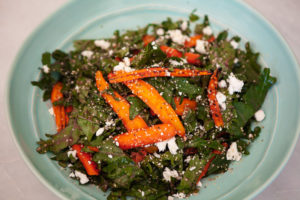
Kale Salad
Kale Salad (Scroll to bottom to view video) This Kale Salad is a good source of vitamins and minerals, and the roasted carrot helps out
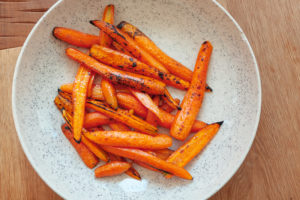
Roasted Carrots
Roasted Carrots This Roasted Carrot recipe is a simple way to incorporate much-needed vegetables into your diet. Pair with a protein of your choosing, or
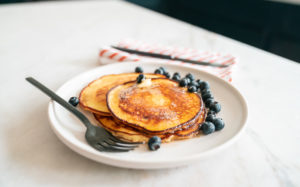
Keto Crepes
Keto Crepes (Scroll to bottom to view video) This Keto breakfast is nourishing and quick—there’s only 4 ingredients! Chef Leah from E.A.T Marketplace in Old

French Press Coffee
French Press Coffee Try something new with your breakfast beverage! This is a step-by-step breakdown on how to make French Press Coffee. Pin Print French

Keto Bombs
Keto Bombs (Scroll to bottom to view video) Keto Bombs are an excellent dessert, and the combinations are practically endless! Give these recipes a try

Pumpkin Shepherd’s pie
Pumpkin Shepherd’s Pie (Scroll to bottom to view video) Make this Pumpkin Shepherd’s Pie when you are craving something warm and hearty. Chef Leah from

Keto Waffles
Keto Waffles & Pumpkin Purée (Scroll to bottom to view video) Chef Leah shares her simple, anti-inflammatory recipe for Keto Waffles. You can use this

Fall Squash Soup
Fall Squash Soup (Scroll to bottom to view video) Harvest time or any time, this squash soup will leave you satisfied. With ingredients like ginger

Anti-Inflammatory Scramble
Anti-Inflammatory Scramble (Scroll to bottom to view video) It’s all in the name! Dr. Ching does a step-by-step video of this anti-inflammatory breakfast option. Pin

BLT Lettuce Wraps
BLT Lettuce Wraps (Scroll to bottom to view video) Try this leafy, crunchy take on BLTs! Dr. Vincent makes a wrap with turkey bacon that

Butternut Squash Soup
Butternut Squash Soup This soup is high in potassium and has a rich flavor, plus, its not that hard to make! Enjoy as a main
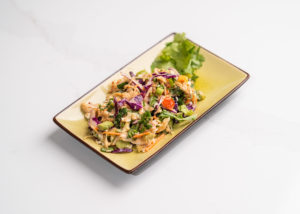
Asian Slaw
Asian Slaw Crisp, spicy and bursting with fresh flavors, this Asian slaw is chock-full of veggies with different textures that’ll make your mouth water! And
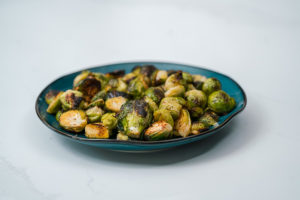
Roasted Brussel Sprouts
Roasted Brussel Sprouts If you say you don’t like Brussel sprouts, think again! Not only are these a great source of iron but roasting them
